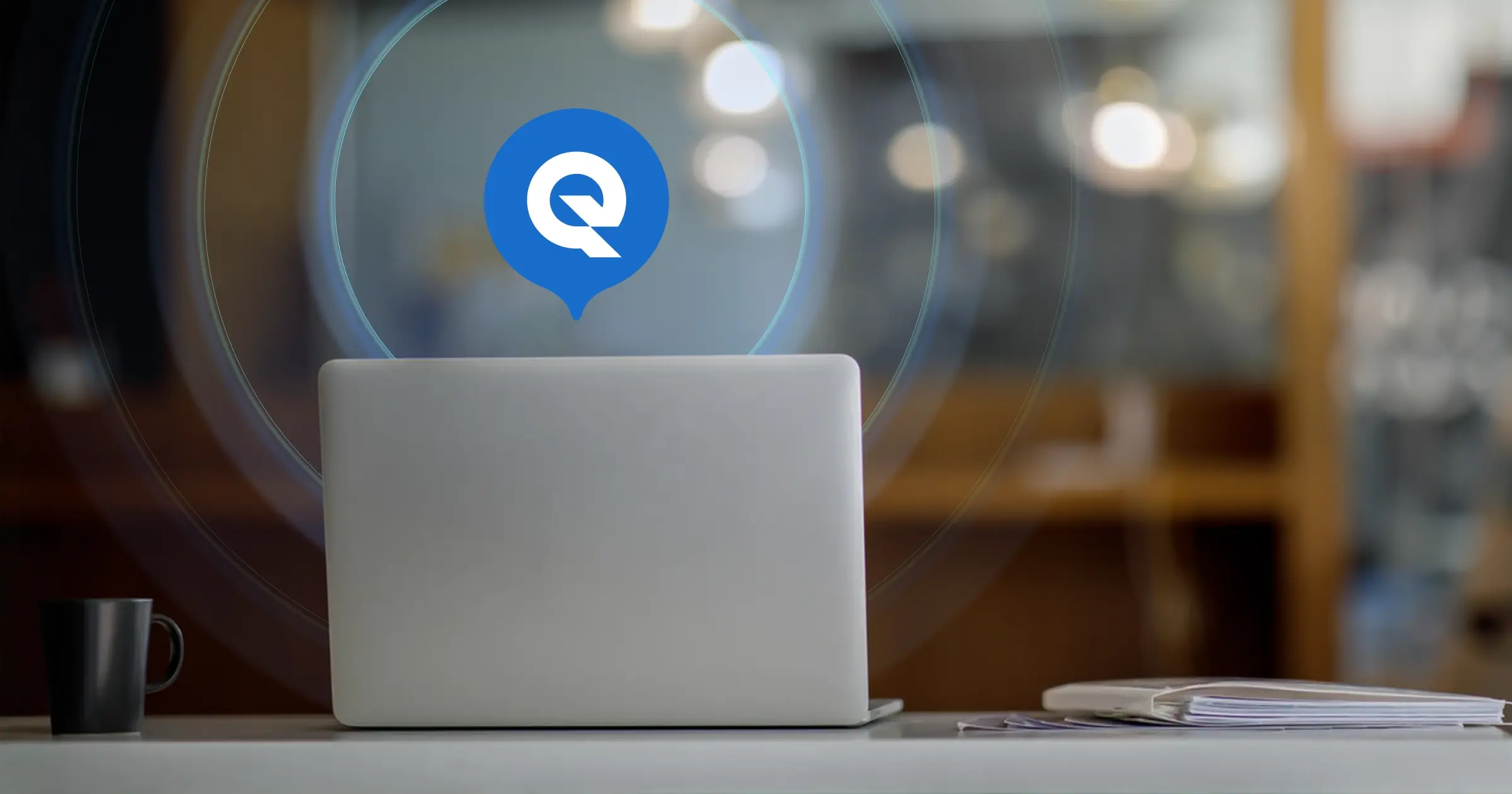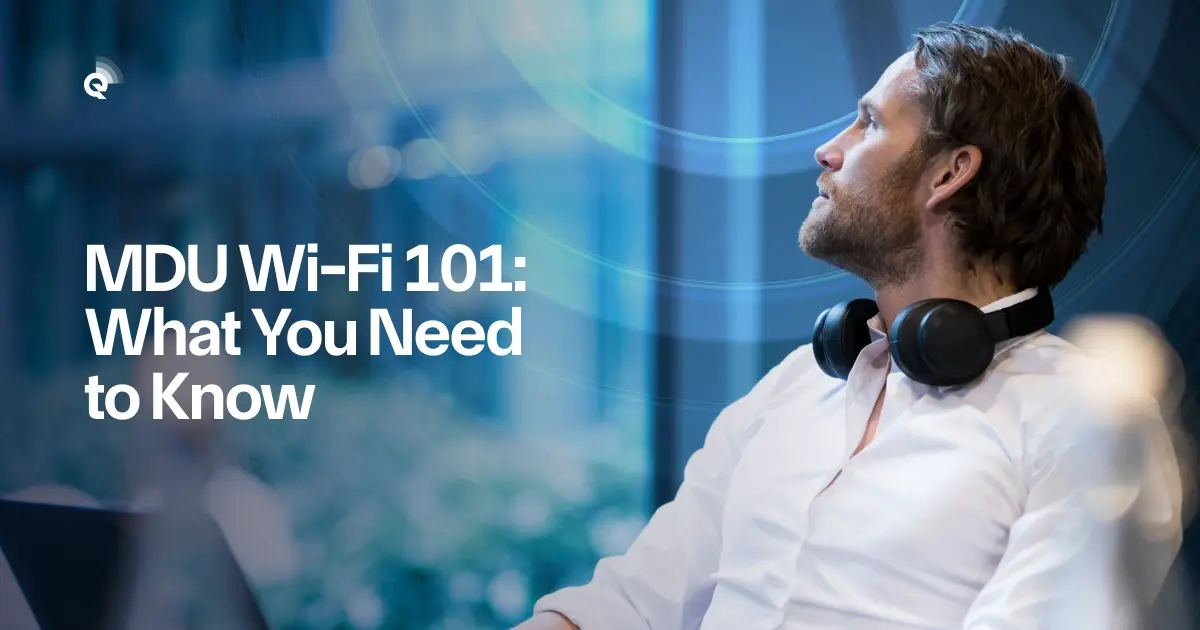MDU Wi-Fi 101: What You Need to Know
Nov 21, 2025
MDU Wi-Fi for Apartment Owners and HOAs: From Headache to High-Value Amenity
Picture this. It is a Tuesday night. A resident cannot get into a Zoom call. Another is trying to stream a movie in the bedroom and it keeps buffering. Someone else messages the property manager: “The Wi-Fi in the gym is unusable again.”
None of these residents call their internet provider first. They call you or your management team.
At that point, it becomes obvious that even if you do not formally “offer internet,” the quality of connectivity in your building already belongs to your resident experience. That experience shows up in reviews, renewals, and ultimately property value. MDU Wi-Fi is the way more and more owners and HOA boards are taking control of that experience and turning it into a structured amenity with clear economics.
What MDU Internet Really Means For Your Property
MDU stands for multi-dwelling unit. If several households share one physical property, you are in MDU territory. That includes apartment buildings, condominium associations, townhome communities, student housing, senior living, and similar communities.
From a connectivity standpoint, this is very different from a single-family home. You are not dealing with one family, one modem, and one small footprint. You are dealing with dozens or hundreds of households, stacked vertically and horizontally, all trying to use bandwidth at the same time, plus shared spaces like lobbies, gyms, coworking rooms, garages, pools, and courtyards. The density, the building materials, and the overlapping networks make “standard home internet” solutions break down quickly.
Why Apartment Wi-Fi Fails When Everyone Goes Solo
The default model in many MDUs is simple on paper. Each resident chooses an ISP, orders a modem, buys a router, and figures out their own Wi-Fi. On the surface, this sounds flexible and easy.
In practice, it creates a patchwork of networks that all interfere with each other. Thick walls, concrete floors, metal structures, long corridors, and elevator shafts weaken signals. Dozens of different routers broadcast overlapping signals on the same channels. Bedrooms, corners of units, and amenity spaces end up with dead spots. Peak-time usage in the evenings or on Sunday afternoons exposes the weaknesses of improvised setups.
Even though the building is not officially responsible for internet, residents feel the problem inside your property, so they still bring it to your onsite team. That is the moment when many owners and HOA boards start asking if a building-wide approach would actually simplify things.
How MDU Wi-Fi Works
The starting point is not hardware. It begins when you share key details about your property with the Quantum Wi-Fi team. After you submit core information about the building layout, unit count, existing cabling, and resident profile, the sales and engineering teams respond with a tailored proposal that matches your asset strategy, your budget, and your NOI targets.
From there, the design work begins. The property is treated like a living network, not just a stack of floor plans. Engineers look at floor layouts, wall materials, shaft locations, common areas, and high-density usage zones such as coworking rooms or lounges. The goal is to map where people actually use Wi-Fi and how signals travel through the structure.
Once the design is validated, infrastructure goes in once and is built to last. Cabling, switches, and access points are installed across the whole property in hallways, ceilings, and common areas rather than cluttering individual units with hardware. This creates a blanket of coverage that reaches into every apartment and shared space, but keeps the equipment accessible and manageable from a property operations standpoint.
On top of that physical layer, the network is segmented so every unit has its own private environment. Each household gets its own logically separated slice of the network, which keeps resident traffic isolated and prevents neighbors from seeing or accessing each other’s devices.
Day to day, the network is monitored and managed centrally. The Quantum Wi-Fi team watches performance, updates firmware, adjusts channels, and prevents or resolves issues before they become building-wide complaints. When residents need help, they contact support directly rather than walking into the leasing office.
For residents, the experience is move-in ready. On the day they arrive, Wi-Fi is already available. Onboarding is a short activation flow rather than a multi-day wait for an ISP technician. Behind the scenes, you control the amenity, but they simply feel that “internet works here.”
Additional Revenue
Once you own the conversation about the internet in your building, you can also own part of the economics.
With Quantum Wi-Fi, the financial model is built around a lower total cost per door and shared upside rather than just replacing one monthly bill with another. Installation costs are optimized at the building level, so the effective installation fee per door is significantly lower than if each resident were setting up their own service and hardware. You invest once in a property-wide network instead of letting hundreds of residents repeat the same spend in a disorganized way.
On the monthly side, Quantum Wi-Fi provides a bulk service with a lower base fee per unit compared to typical retail rates for comparable speeds. You can choose how to package that base service, for example by including it in rent, adding a technology or amenity fee, or offering tiered upgrades. The important part is that the wholesale price is lower, so there is room to create a healthy margin while still letting residents pay less than they would in a retail model.
The revenue share component completes the picture. When residents opt for higher tiers or additional services on top of the base connection, the incremental revenue is shared between Quantum Wi-Fi and the property. This means that better adoption and higher satisfaction with the network do not just reduce headaches, they also support your NOI. Instead of sending all internet revenue out to a third-party ISP, a portion stays aligned with the asset.

Benefits of MDU Wi-Fi for Residents
Residents judge internet service in very simple terms. They want it to work everywhere in their home and throughout the property, and they do not want to think about it.
With a well-designed MDU Wi-Fi deployment, coverage reaches into every apartment, including those tricky corners where home routers often fail. Because the access points are placed in hallways and common areas according to a proper design, residents experience a stronger and more consistent signal through walls and between rooms.
Reliability improves, especially at peak hours. Instead of dozens of uncoordinated routers competing for airspace, there is one coordinated system that can be tuned and scaled according to actual demand. When usage spikes, the network can be managed intelligently so performance remains stable across the building.
Security is cleaner as well. Residents no longer rely on personal routers with outdated firmware and default passwords. Their devices connect to a modern managed network that isolates each unit and uses enterprise-grade security measures. From a resident’s perspective, they simply log in and use their own private Wi-Fi, but the underlying protections are significantly stronger.
Move-in is smoother. New residents do not have to schedule technician visits or spend their first weekend in the new place waiting for an installation window. Internet is ready from day one, which quietly removes a major friction point in the move-in process.
Finally, the financial side is easier to understand. Because the base plan is arranged at a bulk rate, many residents pay less than they would for similar performance on a standalone contract. When upgrades are available, they can choose them, but everyone starts from a solid baseline that is already part of life in the building.
Why Owners and HOA Boards Set Up Wi-Fi For the Whole Building
When residents experience all of these benefits, owners and HOA boards feel the results in ways that matter for the asset.
Leasing becomes easier because internet shifts from a question mark to a clear amenity. Prospective residents increasingly ask about connectivity on tours. Being able to say that Wi-Fi is ready on move-in and works across the property is tangible reassurance, especially for remote workers and families who rely on streaming, gaming, and video calls.
Operationally, property teams stop absorbing the emotional side of internet problems. Instead of explaining that “it is the ISP’s responsibility” while still dealing with upset residents, staff can refer people to a dedicated support line that understands the building’s network. Complaints go to the team that can fix them.
For HOA boards, a building-wide solution also creates consistency across units. Instead of debating individual contracts and installations, the association can standardize service quality while leveraging a better financial structure and revenue participation.
On a longer time horizon, the network becomes the foundation for smart building initiatives. Once you have reliable connectivity everywhere, adding cameras, access control, leak detection, and energy management systems becomes far easier and more cost-effective.
Bulk MDU Internet vs. The Old Resident-Paid Model
Comparing the traditional resident-paid approach with a Quantum Wi-Fi bulk model is not only about technology, it is about control and economics.
In the old model, residents pick their own providers, install random hardware, and pay retail prices. The building has very little influence over service quality, yet it still deals with many of the complaints. There is no unified network supporting common areas or building systems, and no revenue share flowing back to the property. Every euro or dollar spent on internet drains out to external ISPs.
In the Quantum Wi-Fi bulk model, the property chooses to centralize internet as an amenity. Infrastructure is installed once for the whole building, with lower installation cost per door because the design is holistic rather than fragmented. Monthly base fees per unit are negotiated at a lower rate than consumer plans, which allows you to package the service in a way that is attractive to residents and still generates margin. On top of that, the revenue share on upgrades and add-ons means that as residents engage more deeply with the service, the property participates in the upside rather than sitting on the sidelines.
The result is a shift from unmanaged cost and frustration to a managed asset: stable service, clear economics, and a direct connection between internet quality and property performance.
What a Rollout Usually Looks Like In Real Buildings
Most Quantum Wi-Fi deployments follow a practical sequence that respects both residents and operations.
It begins with a thorough assessment. The team reviews your existing MDF and IDF rooms, current cabling, power, and any existing network equipment. They walk the property to understand how residents use spaces and where coverage is critical.
Next comes capacity and design planning. Based on unit count, resident profile, and anticipated demand for streaming and remote work, Quantum Wi-Fi defines the bandwidth requirements and finalizes the network architecture. Access point locations, cabling paths, and switch placement are all matched to the realities of your building, not a generic template.
Installation is scheduled to minimize disruption. Work can be phased by floor or building, depending on your portfolio and occupancy, and is coordinated with management so residents know what to expect. Because hardware is in hallways, ceilings, and common areas rather than inside apartments, access is easier and intrusiveness is lower.
Once the network is ready, resident onboarding begins. New and existing residents receive clear instructions on how to activate their service, set up their private credentials, and request help if they need it. At the same time, the dedicated support function goes live, so your onsite team can immediately lean on it instead of handling Wi-Fi questions themselves.
After launch, the network is not static. Quantum Wi-Fi monitors performance, tunes settings, and plans upgrades as usage grows. The system is treated as a living part of the building, just like HVAC or access control, rather than a collection of consumer gadgets.

Where Quantum Wi-Fi Comes In
Quantum Wi-Fi is built specifically for MDUs and multifamily portfolios. The goal is to give owners and HOA boards a way to turn internet from a recurring problem into a structured amenity with aligned economics.
At the property level, Quantum Wi-Fi designs and operates managed networks that cover every apartment and all common areas using hardware placed in hallways and shared spaces. Each unit receives its own private, secure Wi-Fi environment, while staff and building systems can run on separate, dedicated layers of the same infrastructure. Monitoring and support run 24/7, so your team does not become the default IT help desk.
Beyond the property boundary, Quantum Wi-Fi is connected to a global footprint of more than ten million hotspots. For residents, this becomes a valuable extra when they travel. They can tap into a familiar network experience in many locations worldwide, which turns your building’s Wi-Fi brand into something they carry with them.
Financially, the model is designed to be owner-friendly. Lower installation costs per door, reduced monthly base rates compared to retail, and a revenue share on upgrades help ensure that better internet does not just protect satisfaction, but also contributes to the asset’s financial performance.
Quick FAQs For Owners and HOA Boards
A common question is whether a shared building network can truly be safe for residents. The answer is yes when the architecture is built correctly. Each unit is isolated at the network level, so devices inside one apartment cannot see or interact with devices in another. Combined with enterprise-grade security, this is usually safer than the mix of consumer routers and default passwords found in a typical MDU today.
Another question is about choice and flexibility. Residents can still have options. The building can offer a strong base tier for everyone and allow individual households to upgrade to higher speeds or add services if they want. The key difference is that these choices sit on top of a single, well-managed foundation, rather than on an uncoordinated jumble of providers.
Owners and boards also ask whether bulk internet really increases NOI. In the Quantum Wi-Fi model, the answer is that it can, because the math changes. You start with a lower installation cost per door, then pair that with a lower wholesale monthly fee per unit than typical retail pricing. When you package that into rent or amenity fees, there is room to create net positive margin. Add revenue share from resident upgrades, and the internet line item shifts from being an external cost centre to a managed source of incremental income.
Finally, this approach works across many property types. Apartments, condominiums, student housing, and senior living communities all benefit from consistent connectivity, simpler operations, and a clearer financial structure. Wherever residents live close together and depend heavily on digital services, MDU Wi-Fi has moved from a “nice extra” to part of the core infrastructure of the property.

